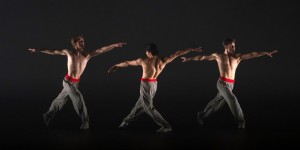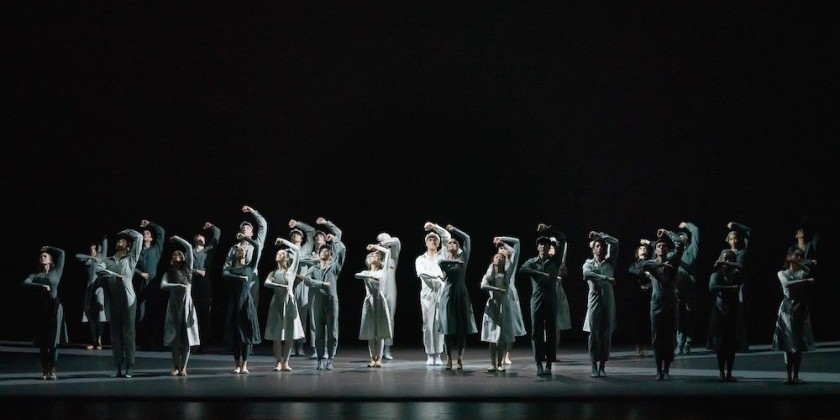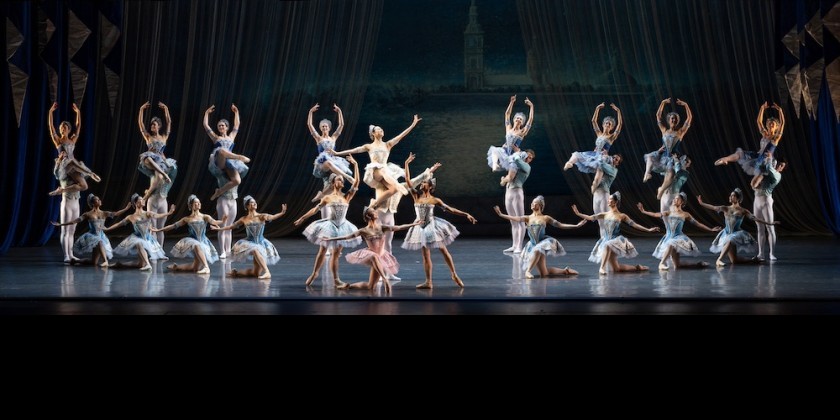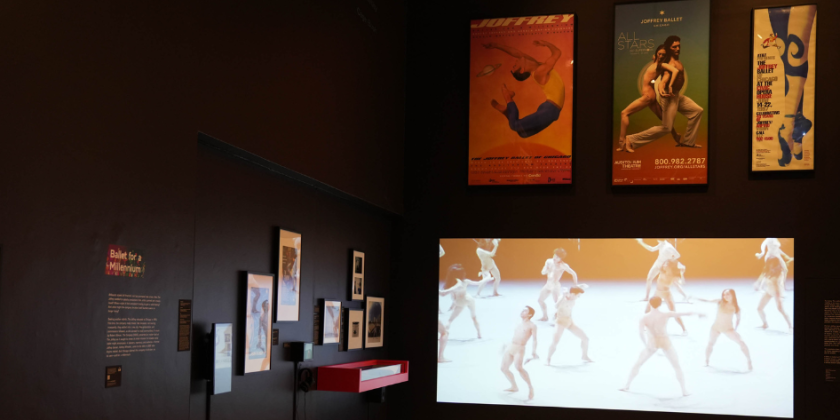Impressions of: American Ballet Theatre's Gala

Celebrating 75 Years at the Metropolitan Opera House
Anyone wondering why American Ballet Theatre postponed its spring gala this year found the answer at the event. The first week of the season offered thrilling moments, as talented, young dancers stepped into historic roles. When gala night arrived, however, feting ABT’s 75th anniversary on May 18 at the Metropolitan Opera House, the company seemed unprepared.
Major anniversaries demand un-wrapping the family silver. The opening week featured Michel Fokine’s Les Sylphides and George Balanchine’s Theme and Variations, Agnes De Mille’s Rodeo and Jerome Robbins’ Fancy Free, plus Antony Tudor’s Pillar of Fire and Jardin aux Lilas. The gala, however, came over-stuffed with 23 items. After each hurried number, the dancers exited at a trot. Speeches by Ruth Ann Koesun, Joel Grey, Sigourney Weaver, Susan Jaffe and artistic director Kevin McKenzie scarcely offered respite, while scrapbook items flashed on a screen. Excerpts are typical gala fare, but the tightly woven narratives from ABT’s early years are hard to pick apart; and fragmenting them gave everyone a partial view.
In the famous intro to Billy the Kid, first a lone cowboy, and then a flood of settlers cross the plains. Pushing forward, pulling in the reins, swinging an imaginary axe and whipping an invisible team of horses they head westward. Yet the title character does not appear in this scene.

Making her debut this season, Devon Teuscher is perfect as Hagar in Pillar of Fire, her figure seemingly dented from the pounding of her own fists. Only Cory Stearns, as the man in the house across the way, guesses what this withdrawn girl is thinking. At the gala we saw Hagar’s downfall, as she places her hand on the man’s thigh, whirls in a split-second decision and impulsively surrenders. Throwing her leg over his shoulder, she is carried inside the house. Since the man has boasted of his sexual prowess---wiping his palms, and tilting his hips suggestively---the speed with which she re-emerges is Tudor at his most sardonic. Hagar’s despoiling marks a turning point, yet it tells us nothing of her coming redemption.
Perhaps the finest ballet summary was a nugget from De Mille’s Fall River Legend, with Gillian Murphy hysterical, but ominously powerful as Lizzie Borden. Inside the Borden home, Lizzie’s father and step-mother rock back and forth sawing away at their daughter’s nerves. The step-mother taps Lizzie’s head ever-so lightly with a finger. When Murphy fetches an axe so she can chop firewood, the audience laughs. Yet the axe is not funny. We laugh because when Lizzie’s parents react by cowering in alarm De Mille has debunked their false propriety.
Another success was "Brother, Can You Spare a Dime,” from Paul Taylor’s Black Tuesday. Taylor drives his point home in this finale, where a disillusioned veteran of WWI realizes he’s expendable. Daniil Simkin was the doughboy, exploiting both his innocent appearance and his toughness in a searching solo. The final image satirizes President George H.W. Bush’s “thousand points of light” speech as pin-points of light shine in the destitute characters’ outstretched hands.

ABT’s evening-length classics and plotless divertissements should divide more easily. Yet the gala planners made awkward choices. Misty Copeland’s company debut as the lead in Swan Lake is hotly anticipated. Yet why tease for it with a clip from the ballet’s last act, where Rothbart does most of the dancing? Without the classroom prologue of Etudes, Joseph Gorak’s grands pirouettes and Murphy’s hops on pointe are just barnstorming. Showcase the corps de ballet in “The Kingdom of the Shades,” by all means. But why drag them on in Giselle, only to stand sentinel for the few moments it takes Maria Kochetkova to whirl in attitudes sautillées, perform a couple of leaps and flee?
After this bewildering passage from Giselle, dignity fell by the wayside as the company raced to present as many ballets as the remaining minutes would allow. With Oliver Smith’s scenery for The Sleeping Beauty as a backdrop, we were treated in quick succession to solos from La Sylphide, Tchaikovsky Pas de Deux, Le Corsaire, La Bayadère, and the Act-III pas de deux from Don Quixote (just the coda) segueing rapidly into the Grand Polonaise from Theme and Variations. All these ballets were short-changed, but the gala did a disservice to history by belittling the huge impact that "Don Q" and “Corsaire” have had on the repertoire.
Most of the soloists crammed into this segment will have better opportunities in the future, but Paloma Herrera, who is retiring, deserved a more gracious showcase. Her Tchaikovsky Pas de Deux is renowned for its clarity and musical phrasing, and squeezing it into a swiftly moving queue felt like ingratitude. Herrera, who joined ABT as a youthful prodigy in 1991, revived the public’s interest in this company when its fortunes hit bottom. ABT had no prospects, when Mikhail Baryshnikov ended his tenure as artistic director; and if Herrera hadn’t come along to stir excitement it could easily have gone under.

Nobody expected the gala hosts to joke about ABT’s scrapes with insolvency, since lack of money and rehearsal time is what makes staging a 75th-anniversary retrospective so devilishly hard. Yet attempts to deflect criticism or misrepresent the company were unfortunate.
Why perform two Robbins ballets at the gala, but only one by Twyla Tharp? Trying to claim Robbins for ABT, when everyone knows he ensconced himself at New York City Ballet, just won’t fly. Tharp has been a company mainstay. Yet the gala included only her Push Comes to Shove, with Herman Cornejo as the hero shouldering his way through an elaborate hat trick. “Push” was the choreographic milestone that in 1976 ushered ABT into the free-wheeling age of postmodernism. Dredging up Robbins’ parochial Les Noces simply recalls how this Broadway choreographer failed whenever he tried to ape modern dance’s true innovators.
If ABT had to belabor its association with Robbins, then why not revisit his kitschy Other Dances? Or, if exploring this company’s complicated relationship with modern dance was the goal, then why not give us Alvin Ailey’s The River, Glen Tetley’s Voluntaries, or Ulysses Dove’s Serious Pleasures? Instead, an excerpt from Sinfonietta---alas, not the glorious, brassy finale---reminded us that ABT has never presented Jiří Kylián’s most daring works. (Dancing his crowd-pleasers Petite Mort and Sechs Tänze in 2003 did not require courage.)
No ABT gala would be complete, however, without Sir Kenneth MacMillan, that phony reformer who addressed ballet’s 20th-century identity crisis by substituting hollow theatrics for classroom steps. Praising his contributions to ABT, and ghastly Anastasia in particular, was an exercise in denial; and while remembering MacMillan, the gala organizers managed to forget about Sir Frederick Ashton. Ouch.
Also blind was the attempt to portray ABT as a company committed to “diversity.” Referencing Ballet Theatre’s short-lived “Negro Unit” only underscores how reluctant this troupe has been to promote racial equality. De Mille assembled that “Negro Unit” in 1940 for a piece called Obeah. Following the example of Ruth Page’s La Guiablesse and the success of Katherine Dunham, Obeah was ersatz ritual, not a step toward integration.
De Mille was neither a civil rights crusader nor a feminist. As proof, we must still endure the female stereotypes of her Rodeo, a ballet that laughs at women’s hopes for equality. Copeland’s wistful and tenderly expressive local debut as The Cowgirl made this ballet doubly sad. Seeing her halted in her tracks, as the men turn disapprovingly in their saddles refusing to allow her to join their posse, one laments all the closed doors.

ABT also had a "Russian Wing” in 1940, and reviving a once-hallowed tradition the troupe opened this season with Les Sylphides. Veronika Part, pressing her long arms to her breast à la Taglioni and making hushed landings; impetuous Isabella Boylston; and Gorak moving effortlessly through the poet’s dream, all left their marks on this legendary ballet. So where was Les Sylphides on gala night? The evening’s biggest slight was indulging the vodka-swilling sylph from Alexei Ratmansky’s Bright Stream, while banishing Fokine’s gentle spirits.
Tudor’s magnificent Jardin aux Lilas didn’t qualify for the gala, either. Playing An Episode in His Past on opening night, Part carried the whole ballet with a dramatic focus that brought her surroundings to life. The others caught up to her later in the week. In a debut, Hee Seo’s Caroline was so timid that she seemed to fear any sudden movement, while as Her Lover Stearns turned waxen with grief. Tudor follows Fokine’s Spectre de la Rose in making Her Lover the stuff of dreams. He’s an elusive phantom, who materializes to tempt the heroine. Suddenly he stands behind her pressing his body against hers, and he darts from the shrubbery to catch her in mid-pirouette. The ballet is charged with high-voltage connections, and storms of unfulfilled desire.
Among the casts in Theme and Variations, Sarah Lane and Cornejo were the most polished. Though her manner can be cloying, her technical ease was a joy. Alight during his brief gala appearance in “Theme,” Gorak displayed style and assurance. While it can keep artists like these on call, ABT has a past and a future.












